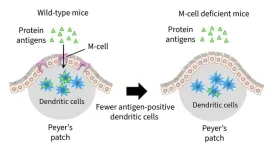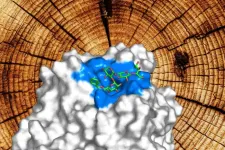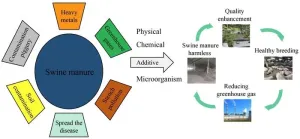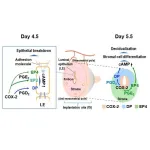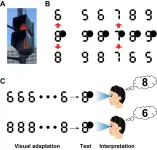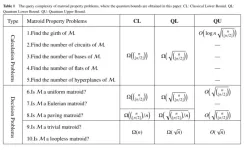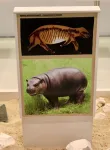Preschool teachers have different views on finger counting. Some teachers consider finger counting use in children to signal that they are struggling with math, while others associate its use as advanced numerical knowledge. In a new Child Development study, researchers at the University of Lausanne in Switzerland and Lea.fr, Editions Nathan in Paris, France, explored whether a finger counting strategy can help kindergarten-aged children solve arithmetic problems.
Adults rarely use their fingers to calculate a small sum (e.g., 3+2) as such behaviors could be attributed to pathological difficulties in mathematics or cognitive impairments. However, young children between the ages of four and six who use their fingers to solve such problems are recognized as intelligent, probably because they have already reached the level of abstraction allowing them to understand that a quantity can be represented by different means. It is only from the age of eight that using finger counting to solve very simple problems can indicate math difficulties.
The current study aimed to determine whether children who do not count on their fingers can be trained to do so and whether this training would result in enhanced arithmetic performance. The study focused on 328 five and six-year-old kindergarteners (mainly White European living in France) and tested their abilities to solve simple addition problems. Participating children were recruited through their teachers who voluntarily took part in the experiment. Teachers were required to register through a digital pedagogical and collaborative network, Lea.fr which was used to provide them with the materials and procedure details to implement the intervention program in their classrooms. The study included a pre-test, a training held over two weeks, a post-test closely after the training's end, and a delayed post-test.
The results show an important increase in performance between pre- and post-test for the trained children who did not count on their fingers originally (from 37% to 77% of correct responses) compared to non-finger users in the control group (from 40% to 48%). These results were replicated in an experiment with an active control group instead of a passive control group. This is the first study to show that children's performance in arithmetic can be improved through explicit teaching of a finger counting strategy.
Researchers suggest that since children who use their fingers to help solve math problems outperform those who do not, teaching a finger counting strategy could help reduce inequity among children in mathematics. However, whether children who use finger counting are using it as an arithmetic procedure or understand something deeper about numbers will still need to be determined with future research.
The Society for Research in Child Development had the opportunity to discuss this research with Dr. Catherine Thevenot from the Institute of Psychology at the University of Lausanne.
SRCD: What led you to study finger counting in kindergartners?
Dr. Thevenot: The idea originated from conversations with primary school teachers. They often asked me whether they should encourage or discourage children from using their fingers to solve calculations. Surprisingly, the existing research didn’t offer a clear answer, which left teachers understandably frustrated with my frequent response of “I don’t know.” This recurring question, coupled with the lack of concrete evidence, inspired me to investigate the issue myself. The best way to provide a meaningful answer was through experimental studies—so that’s exactly what I set out to do.
SRCD: How can these findings be useful for teachers, practitioners and caregivers?
Dr. Thevenot: Our findings are highly valuable because, for the first time, we provide a concrete answer to the long-standing question of whether teachers should explicitly teach children to use their fingers for solving addition problems—especially those who don’t do so naturally. The answer is yes. Our study demonstrates that finger calculation training is effective for over 75% of kindergartners. The next step is to explore how we can support the remaining 25% of children who didn’t respond as well to the intervention.
SRCD: Were you surprised by any of the findings?
Dr. Thevenot: Absolutely. When I first saw the results, I was amazed by the huge improvement in performance among children who didn’t initially use their fingers to solve the problems. Before our intervention, these children were only able to solve about one-third of the addition problems at pre-test. After training, however, they were solving over three-quarters of them! The difference was striking, especially compared to the control groups, where gains were insignificant. The extent of this improvement truly exceeded my expectations.
SRCD: What’s next in this field of research?
Dr. Thevenot: An important question now is to determine whether what we taught to children goes beyond a mere procedure to solve the problems. In other words, we want to know whether our intervention led to a deeper conceptual understanding of numbers, specifically whether children better grasp how to manipulate the quantities represented by their fingers. In fact, we have already started addressing this question and the initial results are very promising. However, we still need to carry out additional experiments to confirm that these improvements are indeed a direct result of our training program.
This work was supported by the Swiss National Science Foundation (Schweizerischer Nationalfonds).
Summarized from an article in Child Development, “Finger counting training enhances addition performance in kindergarteners,” by Poletti, C., Krenger, M. (Institute of Psychology, University of Lausanne, Lausanne, Switzerland),Létang, M., Hennequin, B. (Lea.fr, Editions Nathan, Paris, France) and Thevenot, C. (Institute of Psychology, University of Lausanne, Lausanne, Switzerland), Copyright 2024 The Society for Research in Child Development. All rights reserved.
END
